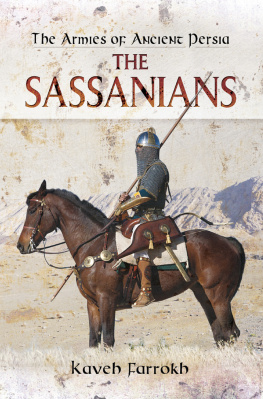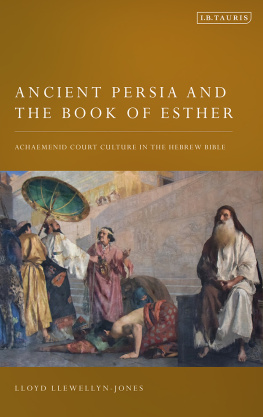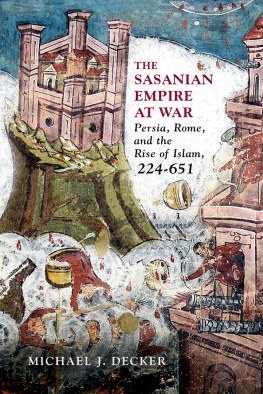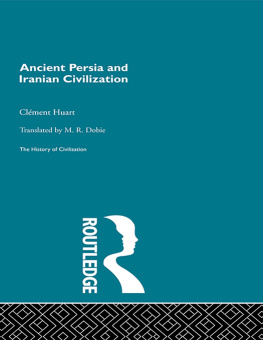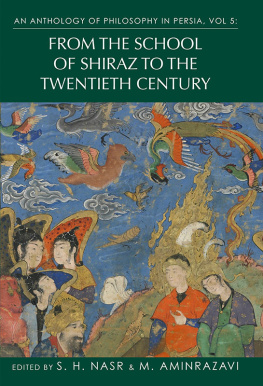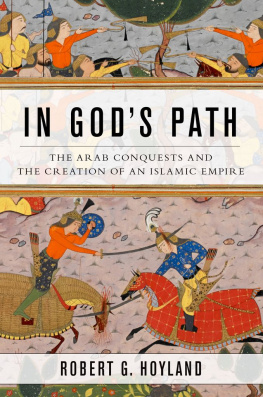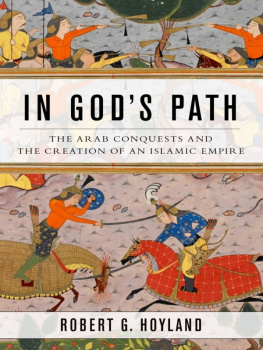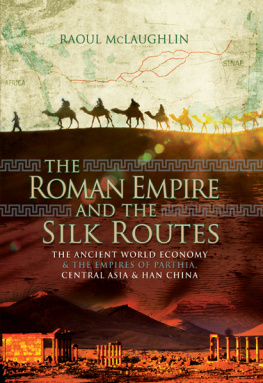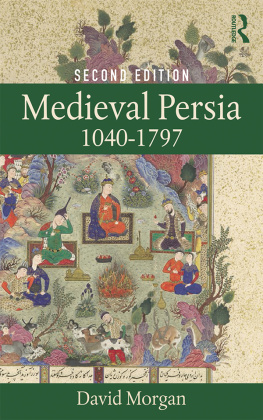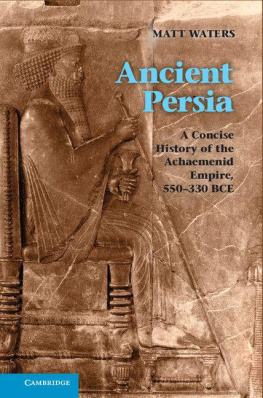
The Armies of Ancient Persia: The Sassanians
The Armies of Ancient Persia: The Sassanians
Kaveh Farrokh
First published in Great Britain in 2017 by
PEN & SWORD MILITARY
An imprint of
Pen & Sword Books Ltd
47 Church Street
Barnsley
South Yorkshire
S70 2AS
Copyright Kaveh Farrokh, 2017
ISBN 978-1-84884-845-0
eISBN 978-1-47388-318-5
Mobi ISBN 978-1-47388-317-8
The right of Kaveh Farrokh to be identified as the author of this work has been asserted by him in accordance with the Copyright, Designs and Patents Act 1988.
A CIP catalogue record for this book is available from the British Library.
All rights reserved. No part of this book may be reproduced or transmitted in any form or by any means, electronic or mechanical including photocopying, recording or by any information storage and retrieval system, without permission from the Publisher in writing.
Pen & Sword Books Ltd incorporates the imprints of Pen & Sword Archaeology,
Atlas, Aviation, Battleground, Discovery, Family History, History, Maritime,
Military, Naval, Politics, Railways, Select, Social History, Transport, True Crime,
and Claymore Press, Frontline Books, Leo Cooper, Praetorian Press,
Remember When, Seaforth Publishing and Wharncliffe.
For a complete list of Pen & Sword titles please contact
PEN & SWORD BOOKS LIMITED
47 Church Street, Barnsley, South Yorkshire, S70 2AS, England
E-mail:
Website: www.pen-and-sword.co.uk
To My Late Brother and Closest Friend, Henry
Acknowledgements
My special thanks to Steven Weingarter and Phil Sidnell for their extreme patience, support and encouragement for completing this project.
List of Plates
Ardashir I receives the diadem of Farr from Ahuramazda at Nagshe Rustam.
Triumph of Shapur I at Nagshe Rustam.
Close up of Shapur I at the triumphal scene at Nagshe Rustam.
Panel featuring two equestrian joust-battle scenes of Bahram II at Nagshe Rustam.
Bahram II surrounded by an audience of nobles and knights at Nagshe Rustam.
Narses receiving the Farr diadem from Warrior Goddess Anahita at Nagshe Rustam.
Enemy knocked off his horse by lance impact of Hormuzd II.
Close-up of Hormuzd II and rear regalia of his horse at Nagshe Rustam.
The Zoroaster cube at Nagshe Rustam.
Shapur III slays a leopard with his sword.
A dismounted Bahram Gur slays a boar with his sword, fourth century CE.
Bahram Gur hunting with his famed skills in archery.
Shapur II hunting lions with the Parthian shot.
Pur-e Vahman engaged in the Parthian shot against a pursuing lion.
The enthroned Khosrow I Anoushirawan clasping his sword.
Close-up view of the sword clasped by the enthroned Khosrow I.
Late or post-Sassanian brahmag e artesharih discovered in the Caucasus.
King Pirouz in a hunting area.
Unidentified Sassanian king hunting ibex and gazelles.
Recreation of an aswar cavalryman from the third century, western Iran.
Recreation of a Sasanian tanurigh cavalry warrior, sixth to early seventh century CE.
Recreation of a Spahbed from the late sixth or early seventh century.
A Spahbed riding with his redag from the late sixth or early seventh century.
Sogdian armoured cavalry from Central Asia, seventh to eighth century.
Sassanian royalty hunting, using a courtly finger release.
Recreation of a Sassanian sword, dagger and pearl studded royal belt, late sixth to early seventh century CE.
A sword presentation shapsheraz ceremony of a nobleman presenting a sword to a King, with an armoured warrior in attendance.
Dismounted Sassanian Savaran knight with sword with Kushan or East-Iranian type blade.
Dismounted Savaran knight engaged in archery as at the Battle of Anglon.
Detail of suspended tirdan .
Savaran officer with lance.
Savaran officer engaged in horse archery.
Close up of riveted Sassanian helmet with mail.
Late Sassanian sword with gold sheeting shown from front and rear.
Detail of late Sassanian sword.
Sassanian fingercaps.
Shapur III and Shapur II posing with scabbard-slide broadswords at Tagh-e Bostan.
Relief at Tagh-e Bostan depicting the investiture of Shapur II or Ardashir II.
Investiture scene above the late Sassanian armored knight at the vault at Tagh-e Bostan.
Tagh-e Bostan Royal Hunt at the right side of the grand Iwan.
The late Sassanian knight at the great vault or Iwan at Taghe Bostan.
List of Figures and Tables
Figures
The Firuzabad joust relief
Scabbard-slide swords
Bargostvan horse armour
Early Sassanian bridles
Equestrian tack
Late Sassanian belts
Sword mounts
Late Sassanian swords
Sassanian stirrups
Central Asian frontier warriors
Tables
Examples of Middle Persian Sassanian Archery Terminology
Partial Lexicon of Middle Persian Sassanian Military Terminology
Late Savaran Equipment as Cited by Dinawari, Balami and Tabari
Four parallels between Kitab ol Ayin and Strategikon
Sassanian Siege Warfare Equipment as Reported by Arabian Sources with (Mainly) Arabic Terminology
Sassanian Terms in Reference to Brahmag e Artesharih
Comparisons Between the Kitab ol Ayin and Nihayat al Sul
Introduction
The military legacy of the Sassanians has certainly been significant, from the beginnings of their dynasty when its founder Ardashir I Babakan (r. 224240 CE) overthrew the Parthians in the battle of Firuzabad (224 CE). Lukonin has noted that the Sassanian state was essentially military in character, eager from the outset to (1) score victories over the Romans and to (2) demonstrate Sassanian military superiority over the de-centralized and recently overthrown Parthians.
This introduction is intended for the reader to be broadly familiarized with the historiography of Sassanian militaria, key archaeological sites, metal works and other artifacts, etc. depicting Sassanian militaria (weapons, horsemen, etc.). Mention must be made of some important divergences between a number of Western military historians and their Iranian counterparts with respect to a number of domains pertaining to Sassanian historiography, a topic discussed further below. The chapter then concludes with an overview of the Islamic-era Iranian epic, the Shahname .
Works on Sassanian Militaria: An Overview
One of the most constructive developments in Iranian studies has been in the study of Sassanian military history, especially with respect to Sassanian-Roman, Sassanian-Central Asian and Sassanian-Arab military relations. Classical sources such as Ammianus Marcellinus, Procopius and the Strategikon remain seminal in studies of Sassanian militaria, but these traditional sources can now be complimented with yet more sources. Much credit must be attributed to Western scholars such as Greatrex, Dodgeon, Lieu, Charles, etc. who examined many hitherto unknown (or ignored) Classical sources such as Cedrenus and Theophanes as well as Armenian sources (e.g. Sebeos). Readers are referred to Dodgeon and Lieus The Roman Eastern Frontier and the Persian Wars (AD 226363) for an excellent resource for an exhaustive range of Classical references with respect to the earlier Sassanian centuries, Greatrexs Rome and Persia at War: 502532 for an excellent study of the sources pertaining to Kavad Is wars and Greatrex and Lieus The Roman Eastern Frontier and the Persian Wars Part II (AD 363630) of the wars from the time of Shapur II to Khosrow II and the period after the Heraclius-Khosrow II wars. Provision of an entire list of Western works in Sassanian militaria is provided in the references section, however works of other western scholars in this domain include Schindel, Bivar, Cosentino, Coulston, Dignas, Winter, Foss, Howard-Johnston and Whitby.
Next page
